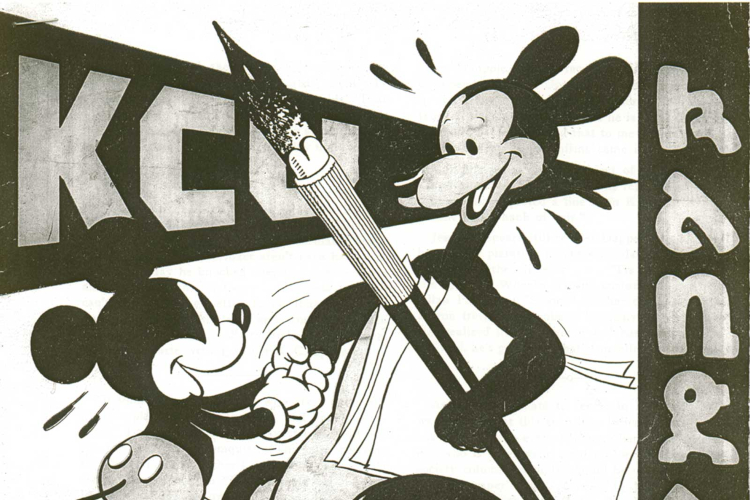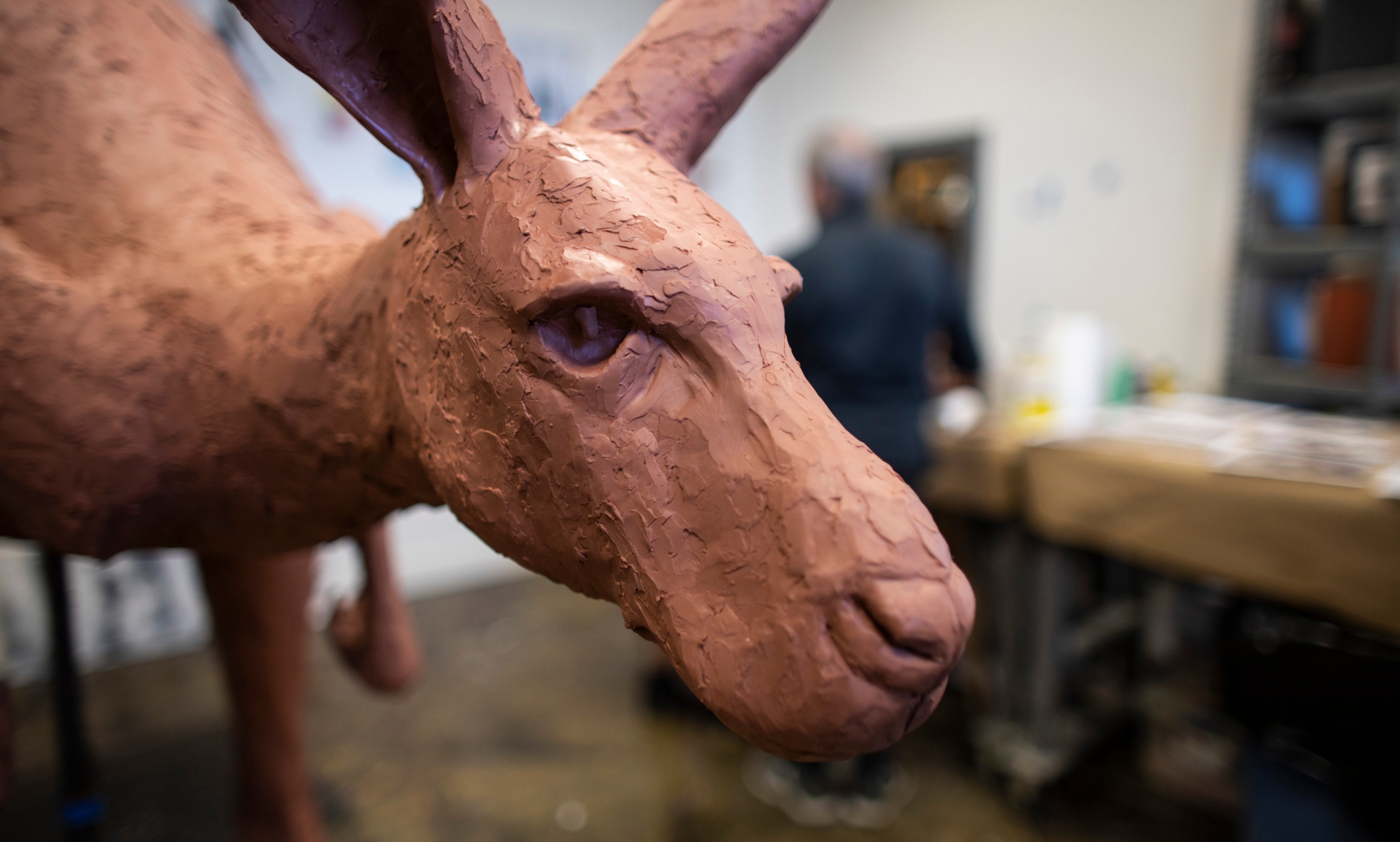There is no better time to celebrate the resilience of the Roo spirit than now. Our community has forged ahead through the challenges of an unprecedented year, and in celebration of that same enduring spirit, we’ll be unveiling a new Roo statue.
The unveiling is 10 a.m. Monday, April 26, at University Walkway, between Swinney Center and Miller Nichols Library and Learning Center, and the entire UMKC community is invited.
It’s an historic event that’s been a few years in the making. In 2018 the Student Government Association, with support of private donations, commissioned Kansas City artist Tom Corbin to create a new Roo statue for campus.
Donations for the statue were made in 2018 in honor of the investiture of Chancellor Mauli Agrawal. It is intended to be a symbol of our community and our history as Roos in Kansas City, and will serve as a rallying point on campus for important and meaningful events, gatherings and alumni visits.
Most important, the new addition to campus serves as an opportunity for students to establish new traditions. Former SGA president Abdul Ahmed offered a suggestion: “My hope is that future graduating classes will take photos in front of the Roo.”
History of the UMKC Roo and Campus Traditions
You would expect such a unique mascot to have an interesting origin story. We caught up with campus historian Chris Wolff to learn more about how the Roo was embraced by the students at UMKC.
Since the university’s founding, one of its core strengths has been its kinship to Kansas City. When the University of Kansas City (predecessor to UMKC) was established by local civic leaders during the Great Depression, it was meant to become a cultural monument — to put Kansas City on the map.
While it was prominent community members who built UMKC, its students are credited for much of what the university has become.
“The founders of UMKC were all-important businesspeople in Kansas City. None of them had any experience in education, so they left it upon the students to create the college experience they wanted,” Wolff said. Students chose the university’s colors, established the student newspaper and wrote the school’s alma mater.
In 1936, editors of the student newspaper decided the debate team needed a mascot. Students proposed adopting the kangaroo as the mascot due to the animal’s popularity at the Kansas City Zoo. To advocate for the mascot, a group of students formed the SGA Kangaroo Party and when they won the election in the spring of 1936, the kangaroo became the official university mascot. In 1938, Kansas City native Walt Disney drew the first picture of the kangaroo—you might see some similarities to a famous mouse!

The university has seen different versions of the Roo through the years. Wolff said throughout history, students have been known to draw their own depictions of the kangaroo despite the university having official branding guides for the kangaroo, the first set of which was in the 1950s.
“Even to this day you’ll see student groups draw their own depictions of Kasey Kangaroo. That’s one of the longstanding traditions of students,” Wolff said. “The reason the kangaroo survived as the mascot all of these years is because of its uniqueness and because of its connection to Kansas City.”
One of the most popular and appreciated depictions of the Roo can be found in watercolor paintings and sculpted into small awards sculptures molded by Corbin, a renowned Kansas City artist.
While traditions from spirit week activities and other student experiences change with the times, UMKC has several monuments, ones that remember classes of old and gifts dedicated by students and community members. For example, the class of 1939 donated one of two flagpoles currently standing on the quad; the other was gifted by the family of Harry Kaufman, a student who died fighting in World War II, and is dedicated to student veterans.
Wolff said UMKC grew up with Kansas City. Having been founded by the same civic leaders that established Liberty Memorial – which you can catch a glimpse of embedded in the university seal — and the Nelson-Atkins Museum of Art, UMKC has deep and longstanding connections to Kansas City. You can come from anywhere in the world, and if you come to UMKC, you are a part of that community.
“The reason the kangaroo survived as the mascot all of these years is because of its uniqueness and because of its connection to Kansas City.”
“Being a Roo means you’re more than just part of the university. It means you’re a part of a whole community that starts with the college,” he said.
With a renewed sense of school spirit and plans to establish a new sense of belonging for its students, new traditions are being created. A few of the oldest ones, however, remain — the student and alumni impact on Kansas City, a lasting gift to campus and a new version of the Roo.
“Kansas City has a very important connection to art. I can’t imagine not having the Nelson here, or the Kemper, or being able to come take photos on campus,” Corbin said. “I hope the Roo inspires other artists. When I was coming into my career as a sculptor, I was told that I could never make a living as an artist. I want to encourage students and let them know they can do it.
“I did a lot of research on kangaroos prior to sculpting the actual monument, and one of the things I learned is that Roos cannot go backward. They can only go forward.”
Join our campus community as we celebrate the installation of this monument. The ceremony will be 10 a.m. Monday, April 26, next to University Walkway near Miller Nichols Library and the University Playhouse. Please continue to follow masking and distancing guidelines.

